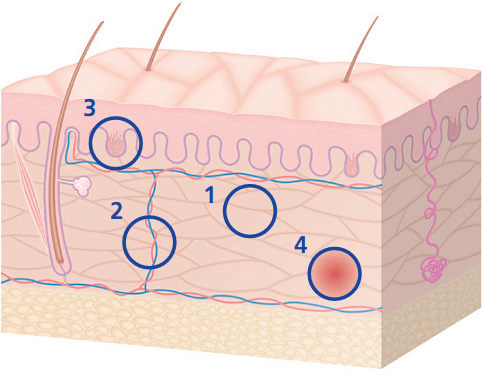As people’s awareness of health and environmental protection enhances, active matter derived from plants is getting more and more attention. Plant polyphenols (PPs) are a kind of substance that plants produce to resist natural enemies, competitors, infections and physical injuries. Currently, over 8000 kinds of plant PPs have been discovered. Plant PPs are widely contained in fruits, vegetables, spices, tea leaves, soy beans, etc. Thanks to their extensive pharmacological effects, they receive much attention. The UV absorption, anti-oxidation, radical clearance, metal complexation and antibiosis functions of plant PPs are similar among plants, animals and humans. Many PPs also have the activity of anti-inflammation, anti-allergy, micro-circulation facilitation, anti-tumor, etc., thus being used in the fields such as medicine, functional food and cosmeceuticals. The first plant medicine approved by FDA is VEREGEN, a tea polyphenol ointment. The annual sales amount of salvia polyphenol acid salt that Shanghai Green Valley cure cardiovascular diseases through injection has exceeded one billion yuan. Plant PPs such as resveratrol, soy isoflavone, magnolia bark polyphenol, glabridin, citrus flavonoid have all been applied in functional food and skincare products. Their effects of anti-oxidation, brightening, diminishing inflammation and anti-allergy is being recognized by the industries and customers. Normally, plant PPs can be applied to several targets at the same time, possessing multiple effects.
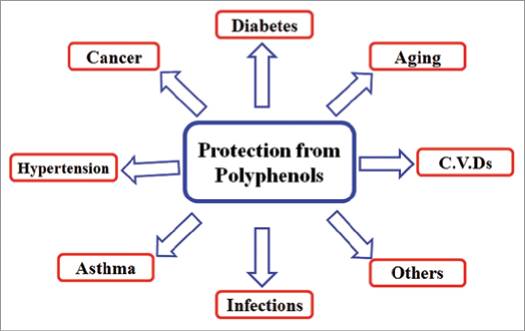
Application of Plant PPs in Medicine and Health

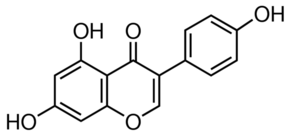
Glabridin (the main brightening element of Glycyrrhizae Glabrae root) Genistein (the active aglycone of soy isoflavone)

Resveratrol

Naringin (one of the main brightening elements of citrus flavonoid)
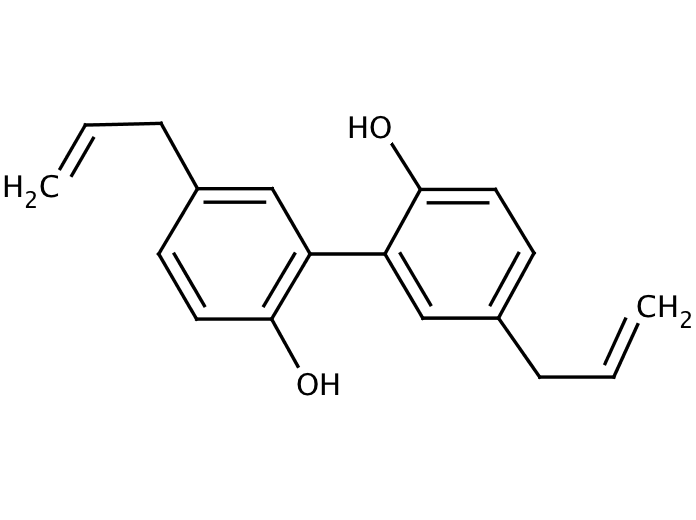
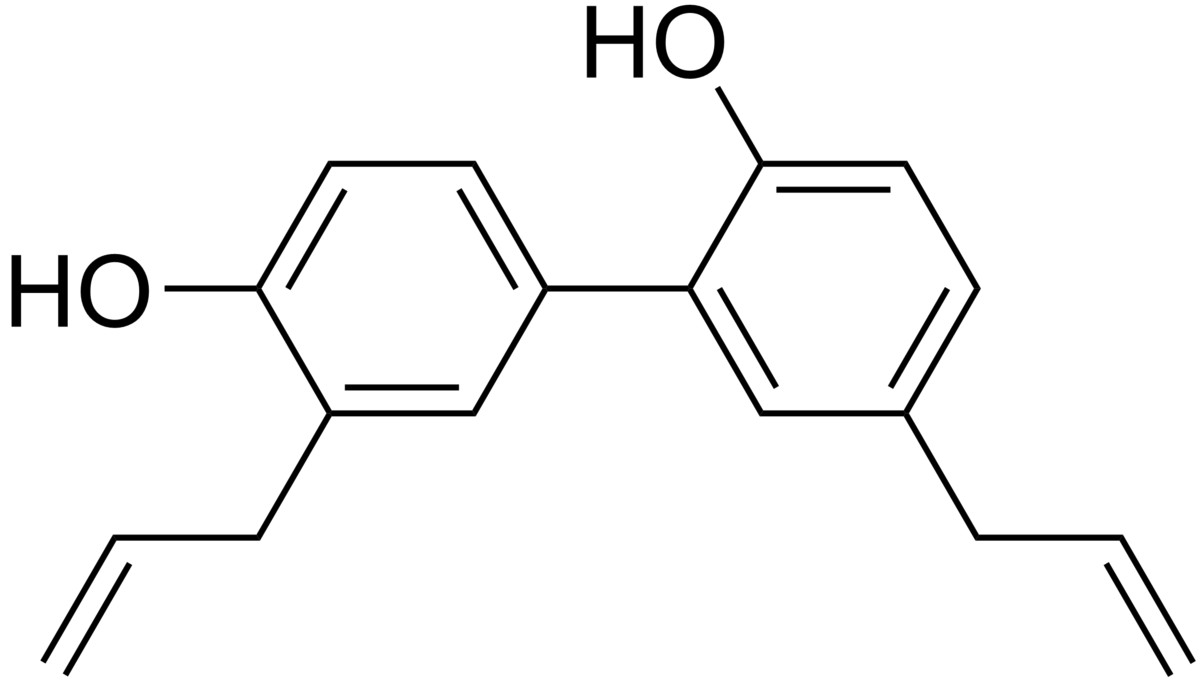
Honokiol Magnolol
The unique physical, chemical and biological properties enable the plant PPs to be a natural skin protector against the injuries caused by UV (e.g. inflammation, light aging and canceration) as well as the antibiotics against skin fungus and bacterial infection. Besides, there are many important phenylalanine metabolites in human bodies (e.g. estrogen, thyroxine, tyrosine and dopamine), which are quite similar to the plant PPs derived from phenylalanine. Hence, plant PPs used in human bodies can easily enter the metabolism channel, replacing or competing with endogenous phenylalanine metabolites. This provides a theoretical basis for the plant PPs skincare products that include the functions of brightening, anti-aging, anti-ance, anti-alopecia and anti-hypertrichosis. As for the anti-inflammation effect closely combined with facilitating the recovery of injuries, not only is it attributed to the anti-oxidation, radical clearance, metal complexation, etc., of plant PPs, but also it depends on the interaction between plant PPs and regular inflammatory cells (e.g. Keratinocyte) and collected inflammatory cells (e.g. Granulocyte, lymphocyte and dendritic cells) of skin. From the perspective of molecular biology, plant PPs restrain the expression and activation of many pro-inflammatory enzymes by reacting with certain surface receptors, and regulating signal transmission channels and inflammation reaction. The extensive molecular targets make plant PPs become the most promising partly applied active matter for anti-inflammation, anti-allergy and injury recovery. Plant PPs can induce the production of enzymes that eliminate carcinogenic toxin and restrain harmful substance from converting into the final carcinogenic enzymes, thus detoxifying and preventing cancers.
The main problems that hinder the application of plant PPs in cosmetics are their chemical instability, interaction with other ingredients, low permeability and fast metabolism in skin. NanoWhite, developed through nano-medicine technology, solves the above problems well while maintaining the original biological activity so that it can be applied to varieties of cosmetics. NanoWhite selects multiple classic plant PPs materials, all of which have strong inhibitory activity over tyrosine enzymes and are able to effectively restrain the production of skin melanin. Their good inflammation diminishing and anti-allergy effect can prevent the melanin pigmentation caused by inflammation, and they also have the effect of anti-glycation and making the skin tone even.
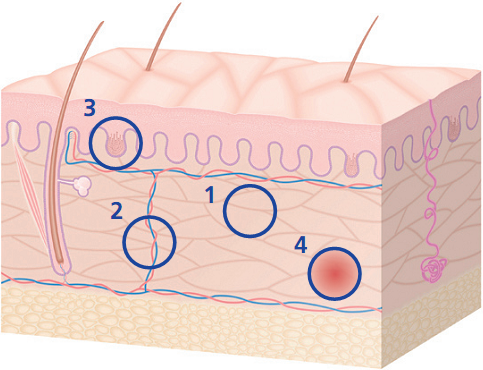
How Do Plant PPs Work
- Restrain tyrosine enzymes; interrupt the synthesis of melanin; lower the intensity of skin pigment; absorb UV; prevent light aging; reduce sun damage and age pigment; improve pale spots
- Restrain the emission of histamine and production of inflammation elements; control and prevent inflammation and allergies
- Strengthen the capillary wall of skin; facilitate blood circulation; improve the breathing of skin; provide oxygen and nutrition better; moisturize and clear waste better; plant PPs have the anti-glycation effect to improve skin tone and texture, prevent the production of age pigment, eliminate redness and enhance the blood micro-circulation of skin,
- Selectively combine with collagen and elastin to protect them from degradation
Product Features:
- Natural plant sources; gentle and non-irritant; strong brightening effect
- NonoWhite uses materials of FDA GRAS class with high safety
- NanoWhite is stable to heat, pH and cuts, so it is convenient to use
- NanoWhite greatly improves the solubility, stability and bioavailability of plant PPs.
- NanoWhite can improve the stability of other active matters in the product and facilitate absorption
Use of Product:add it at the low temperature stage; recommended dosage: 0.5-2%.
Storage of Product: store it away from light at a temperature lower than 25℃.
